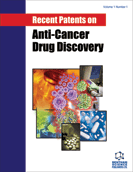Abstract
Aberrations in the Ubiquitin-Proteasome System (UPS) have been recently connected to the pathogenesis of several human protein degradation disorders (e.g., cancer and neurodegenerative diseases), so that proteasome is now considered an important target for drug discovery. Small molecules able to inhibit and modulate UPS have been, in fact, described as novel tools for a new approach in anti-cancer therapy. In particular Proteasome Inhibitors (PIs), blocking activation of nuclear factor-kappa B (NF-kB), trigger a decreased cellular proliferation and angiogenic cytokine production, induce cell death and inhibit tumor cell adhesion to stroma. Furthermore, several studies have demonstrated that PIs potentiate the activity of other anti-cancer treatment, in part by down-regulating chemoresistance pathways. Therefore pharmacologic, preclinical, and clinical data suggested the use of PIs in anticancer strategies, for their potential therapeutic relevance in the treatment of cancer and inflammatory-related diseases. This review focuses on recent advances in the development of PIs anticancer agents highlighting both novel patented compounds and novel therapeutic protocol of intervention.
Keywords: Proteasome Inhibitors (PIs), protein degradation disorders, cancer
Recent Patents on Anti-Cancer Drug Discovery
Title: Proteasome Inhibitors Therapeutic Strategies for Cancer
Volume: 4 Issue: 1
Author(s): Annamaria D'Alessandro, Luisa Pieroni, Maurizio Ronci, Simona D'Aguanno, Giorgio Federici and Andrea Urbani
Affiliation:
Keywords: Proteasome Inhibitors (PIs), protein degradation disorders, cancer
Abstract: Aberrations in the Ubiquitin-Proteasome System (UPS) have been recently connected to the pathogenesis of several human protein degradation disorders (e.g., cancer and neurodegenerative diseases), so that proteasome is now considered an important target for drug discovery. Small molecules able to inhibit and modulate UPS have been, in fact, described as novel tools for a new approach in anti-cancer therapy. In particular Proteasome Inhibitors (PIs), blocking activation of nuclear factor-kappa B (NF-kB), trigger a decreased cellular proliferation and angiogenic cytokine production, induce cell death and inhibit tumor cell adhesion to stroma. Furthermore, several studies have demonstrated that PIs potentiate the activity of other anti-cancer treatment, in part by down-regulating chemoresistance pathways. Therefore pharmacologic, preclinical, and clinical data suggested the use of PIs in anticancer strategies, for their potential therapeutic relevance in the treatment of cancer and inflammatory-related diseases. This review focuses on recent advances in the development of PIs anticancer agents highlighting both novel patented compounds and novel therapeutic protocol of intervention.
Export Options
About this article
Cite this article as:
D'Alessandro Annamaria, Pieroni Luisa, Ronci Maurizio, D'Aguanno Simona, Federici Giorgio and Urbani Andrea, Proteasome Inhibitors Therapeutic Strategies for Cancer, Recent Patents on Anti-Cancer Drug Discovery 2009; 4 (1) . https://dx.doi.org/10.2174/157489209787002452
| DOI https://dx.doi.org/10.2174/157489209787002452 |
Print ISSN 1574-8928 |
| Publisher Name Bentham Science Publisher |
Online ISSN 2212-3970 |
 17
17
- Author Guidelines
- Bentham Author Support Services (BASS)
- Graphical Abstracts
- Fabricating and Stating False Information
- Research Misconduct
- Post Publication Discussions and Corrections
- Publishing Ethics and Rectitude
- Increase Visibility of Your Article
- Archiving Policies
- Peer Review Workflow
- Order Your Article Before Print
- Promote Your Article
- Manuscript Transfer Facility
- Editorial Policies
- Allegations from Whistleblowers
Related Articles
-
Chemical Genomic and Proteomic Methods for Determining Kinase Inhibitor Selectivity
Combinatorial Chemistry & High Throughput Screening Eriocalyxin B-Induced Apoptosis in Pancreatic Adenocarcinoma Cells Through Thiol-Containing Antioxidant Systems and Downstream Signalling Pathways
Current Molecular Medicine Cancer Therapy: Targeting Mitochondria and other Sub-cellular Organelles
Current Pharmaceutical Design Ribozyme- and Deoxyribozyme-Strategies for Medical Applications
Current Drug Targets Beneficial and Adverse Effects of Molecularly Targeted Therapies for Acute Promyelocytic Leukemia in Central Nervous System
CNS & Neurological Disorders - Drug Targets Follicular Immunology Environment and the Influence on In Vitro Fertilization Outcome
Current Women`s Health Reviews Development and Assessment of Conventional and Targeted Drug Combinations for Use in the Treatment of Aggressive Breast Cancers
Current Cancer Drug Targets MicroRNA-34 Family, Mechanisms of Action in Cancer: A Review
Current Cancer Drug Targets In Vivo Optical Imaging in Gene & Cell Therapy
Current Gene Therapy Designing a Novel Multi-Epitope Vaccine Against Htlv-1 Related Adult T-cell Leukemia/Lymphoma: An In Silico Approach
Current Proteomics Non-Genotoxic p53-Activators and their Significance as Antitumor Therapy of Future
Current Medicinal Chemistry Synthesis and Anticancer Activity of Phthalimido and Naphthalimido Substituted Dihydropyrimidone Conjugates
Letters in Drug Design & Discovery Equilibrative Nucleoside (ENTs) and Cationic Amino Acid (CATs) Transporters: Implications in Foetal Endothelial Dysfunction in Human Pregnancy Diseases
Current Vascular Pharmacology Mesenchymal Stromal Cells from Umbilical Cord Blood
Current Stem Cell Research & Therapy Recent Patents Reveal Microtubules as Persistent Promising Target for Novel Drug Development for Cancers
Recent Patents on Anti-Infective Drug Discovery The Influence of Wuzhi Capsule on the Pharmacokinetics of Cyclophosphamide
Recent Patents on Anti-Cancer Drug Discovery p53 Gene Family: Structural, Functional and Evolutionary Features
Current Genomics Interferon-Beta Therapy Monitoring in Multiple Sclerosis Patients
Endocrine, Metabolic & Immune Disorders - Drug Targets Quantitative Structure-Activity Relationship Studies: Understanding the Mechanism of Tyrosine Kinase Inhibition
Current Enzyme Inhibition High-level Soluble Expression, Purification, and Functional Characterization of the Recombinant Human Leukemia Inhibitory Factor: A Potential General Strategy for the Recombinant Expression of Cytokines Consisting of Four α-Helices in a Bundle
Protein & Peptide Letters


























